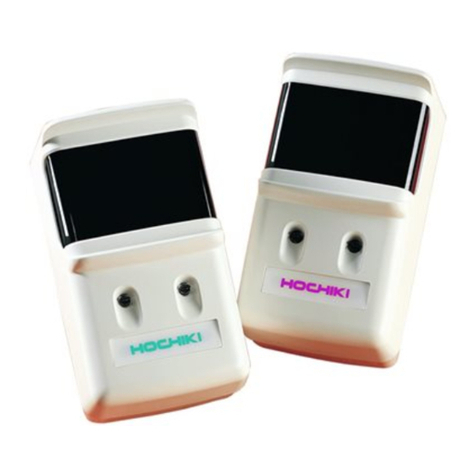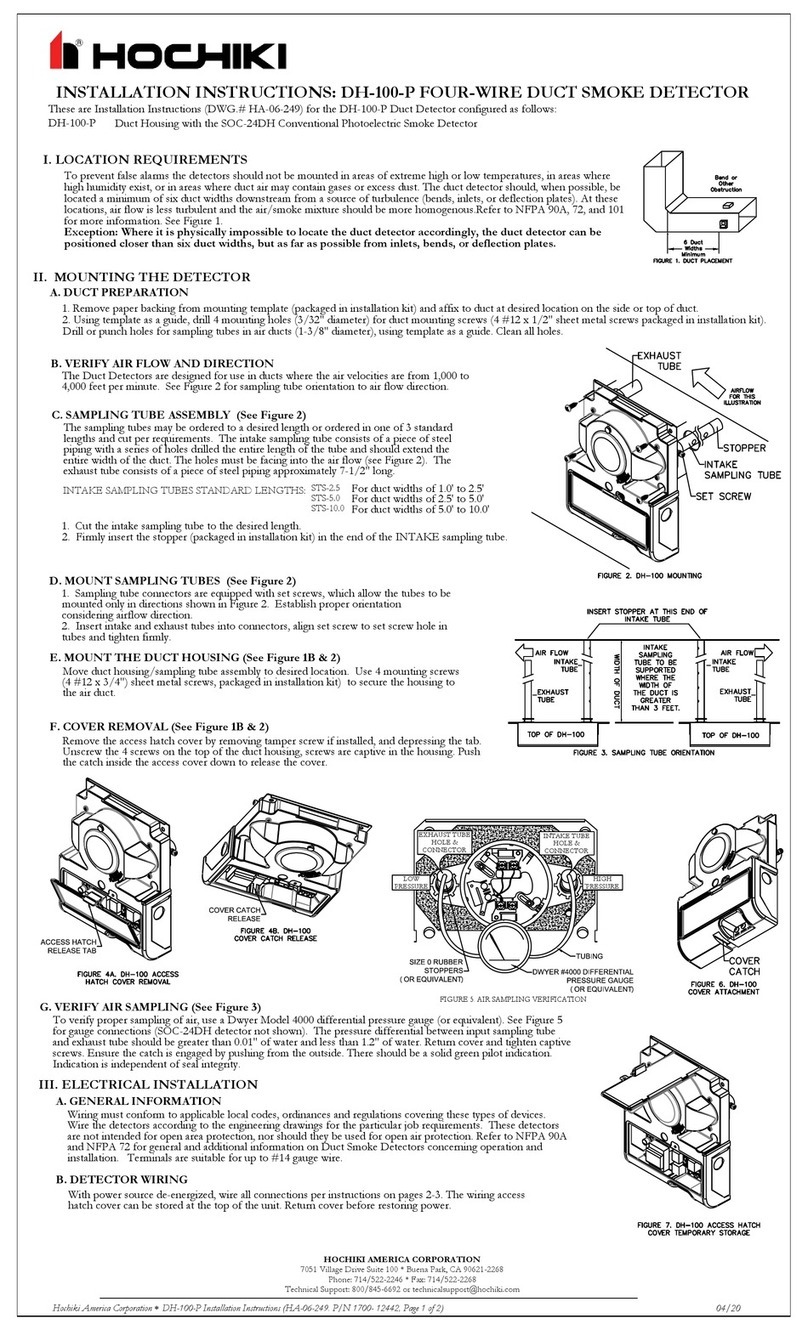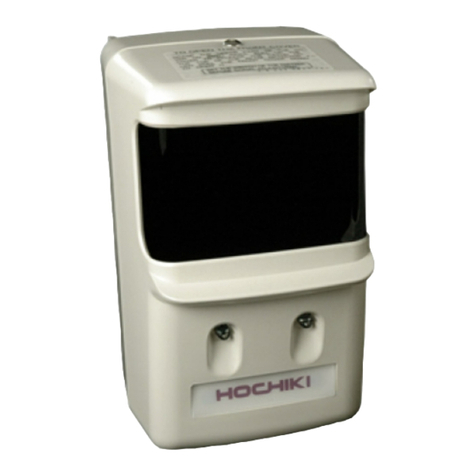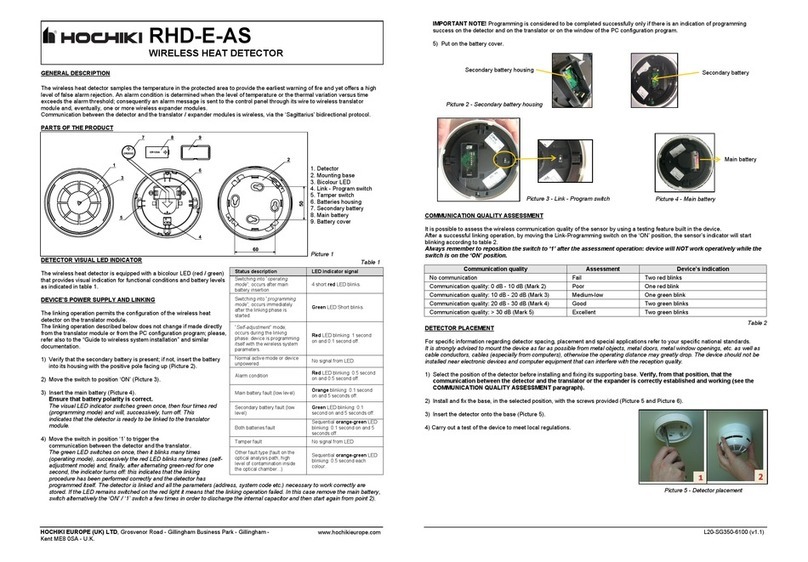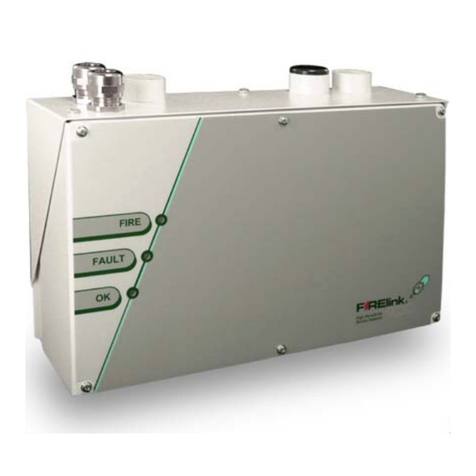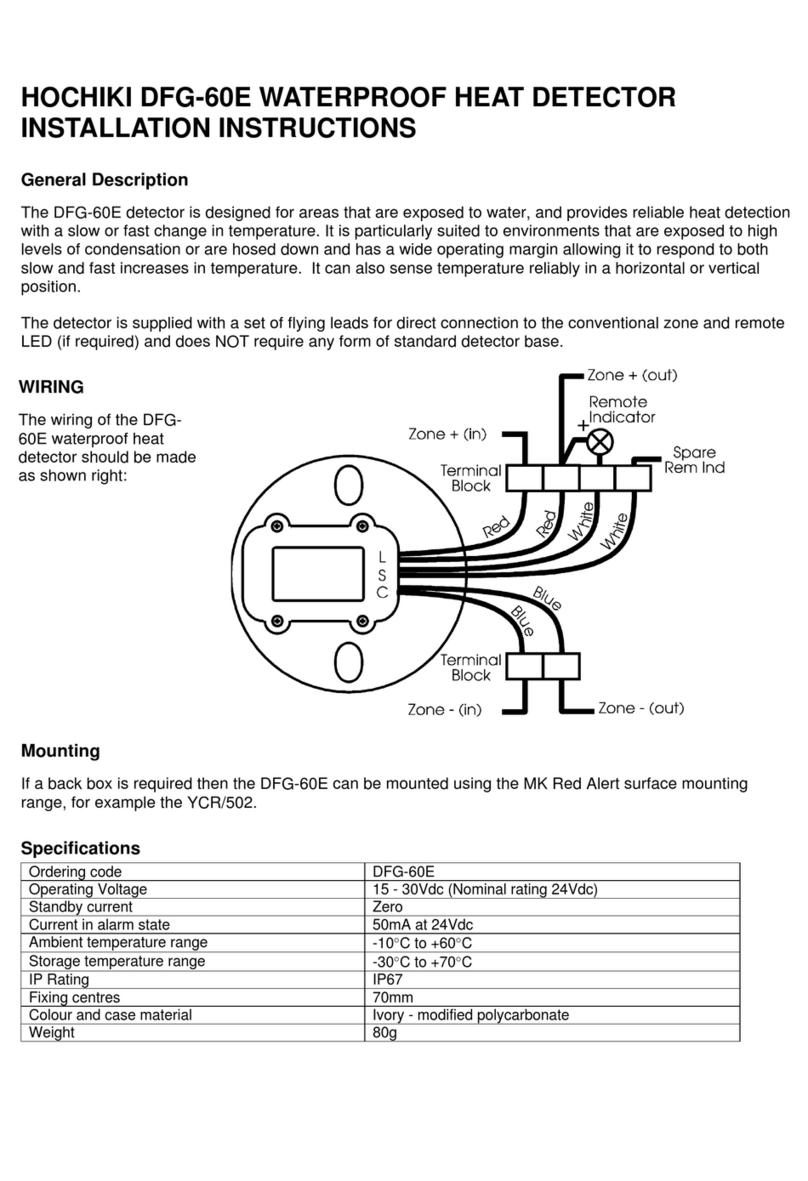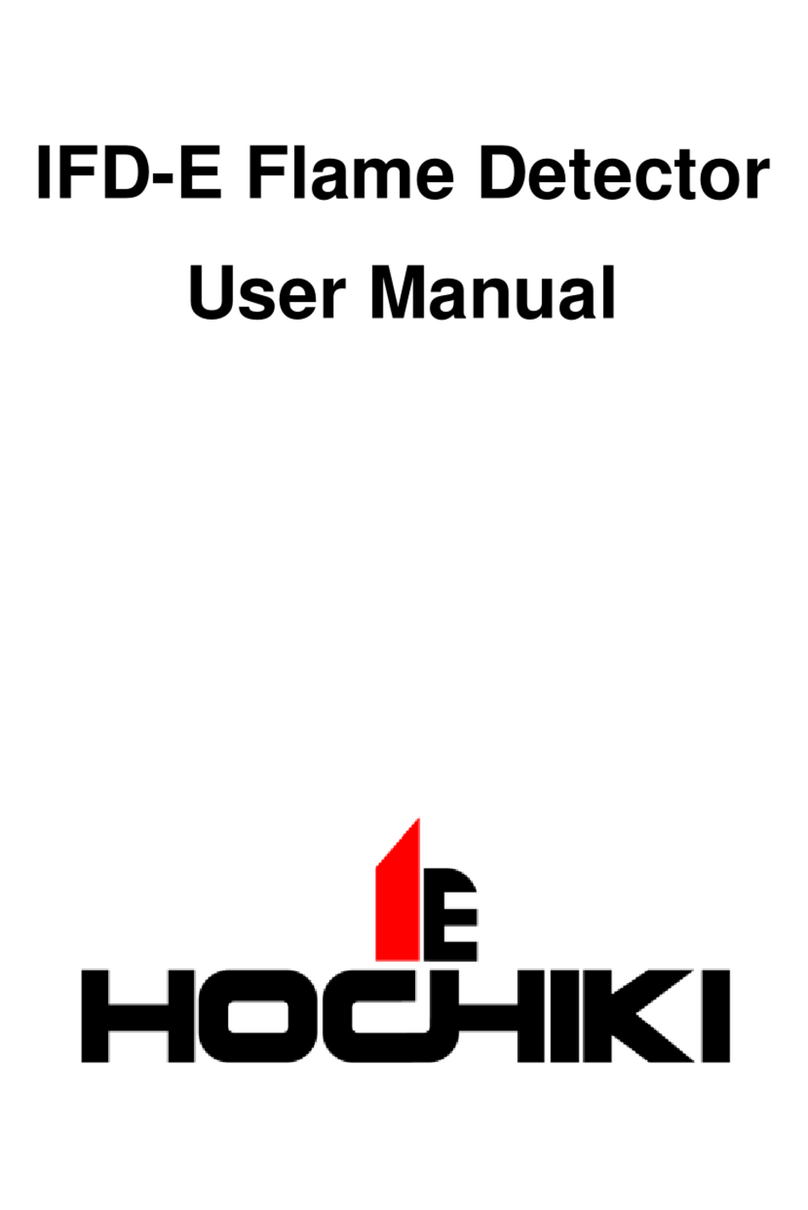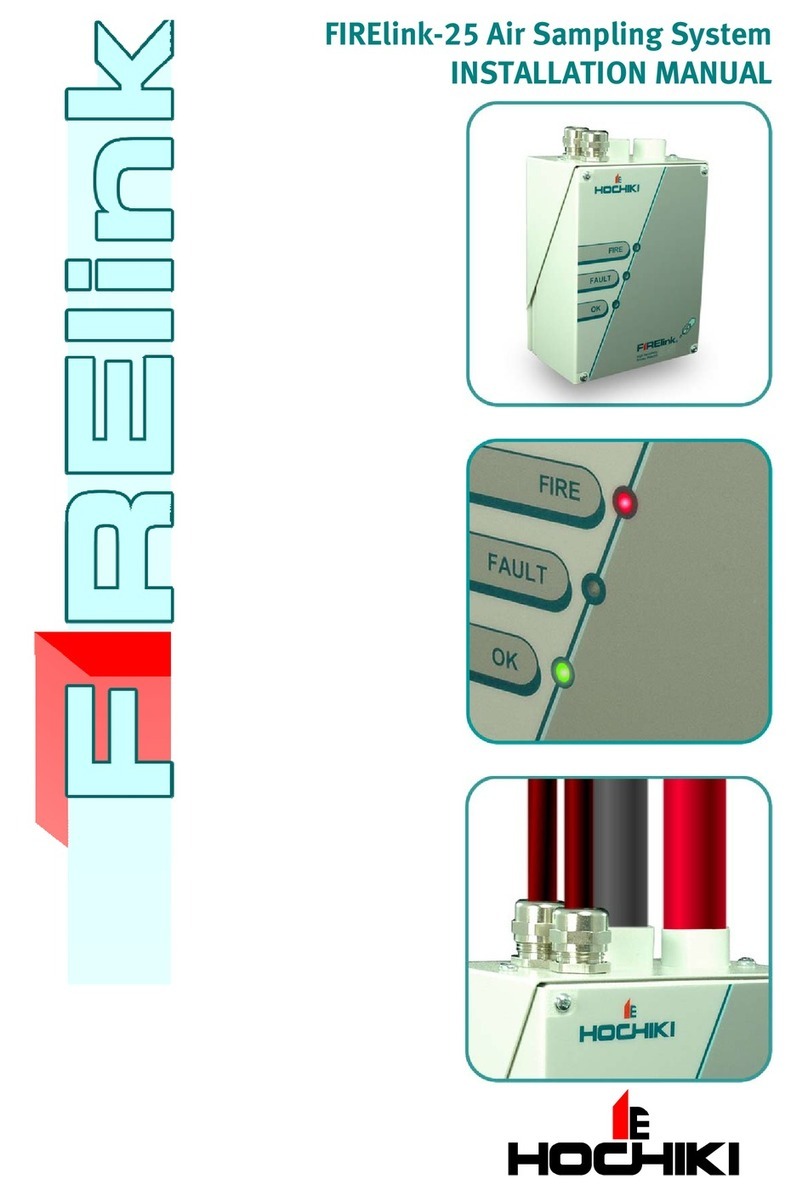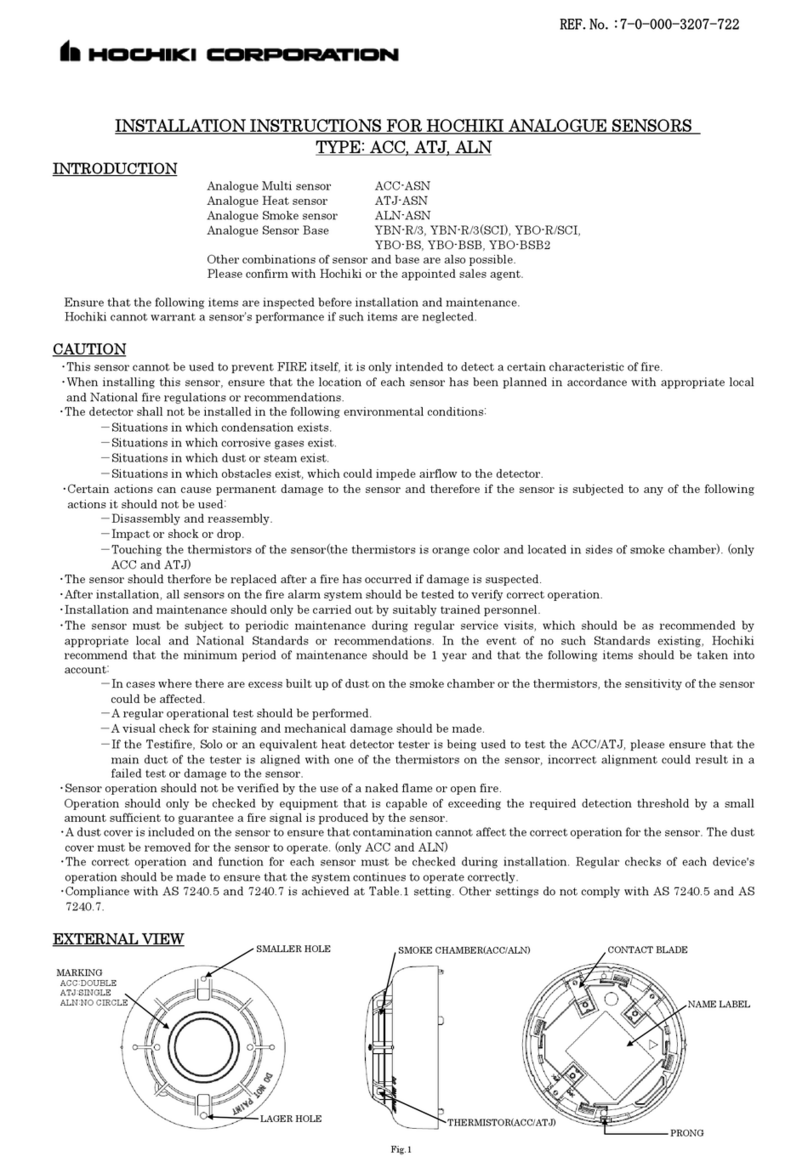2 Hochiki Europe (UK) Ltd
2-3-0-810/ISS3/SEP14
General
Description
This Installation Guide gives information on the Flameproof (EExd) version of the flame detectors that
have been approved by ISSeP (Institut Scientifique de Service Public; notified body number:492). The
requirements of the European Community Directive 94/9/EC, the ATmosphere EXplosives ATEX
Directive have been met. The approval has been assessed by reference to the following standards,
EN50014:1997+A1 and A2:1999, EN 50018:2000 and pr AA EN 50018 plus a review against EN60079-
1:2004 which showed that there were no changes which materially affected the “state of technological
progress” with respect to the product. EN50281-1-1:1998.
The detector is triple infra-red (IR³) and the housing is copper-free aluminium alloy (LM25).
The guide also provides information on Flameproof (type‘d’) enclosures, the application, maintenance,
installation and adjustments of the detectors. Reference to other individual detector publications can be
made available for more information on none Flameproof issues. These publications are available on
request.
NOTE: Information in this guide is given in good faith, but the manufacturer cannot be held responsible
for any omissions or errors. The company reserves the right to change the specifications of
products at any time and without prior notice.
Introduction to Flameproof Enclosures
There are many places where an explosive mixture of air and gas or vapour is or may be present,
intermittently or as a result of an accident. These are defined as hazardous areas by EN 60079-0
(formally EN 50014), Electrical apparatus for explosive gas atmospheres –General requirements.
Hazardous areas are common in petroleum and chemical engineering plants and in factories processing
and storing gases, solvents, paints and other volatile substances.
Electrical equipment for use in these areas needs to be designed so that it cannot ignite an explosive
mixture, not only in normal operation but also in fault conditions. There are a number of methods
available to achieve this –oil immersion, pressurised apparatus and powder filling, for example, but the
two most common used are intrinsic safety and flameproof enclosures.
Flameproof equipment is contained in a box so strong that an internal explosion will neither damage the
box nor be transmitted outside the box. The surface must remain cool enough not to ignite the explosive
mixture.
When flameproof equipment is interconnected, flameproof wiring must be used. This method is most
valuable when high power levels are unavoidable but it is not acceptable for areas in which an explosive
gas/air mixture may be continuously present or present for long periods.
For this reason these flame detectors are made intrinsically safe rather than flameproof. Intrinsically safe
equipment operates at such low power and with such small amounts of stored energy that it is incapable
of causing ignition:
In normal conditions
With a single fault (for ib type of protection code)
With any combination of two faults (for ia type of protection code)
In any of these conditions every component must remain cool enough not to ignite gases for which it is
approved. See Table 4
